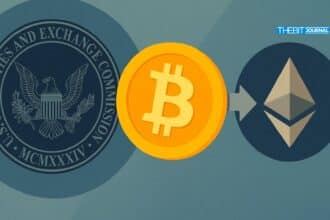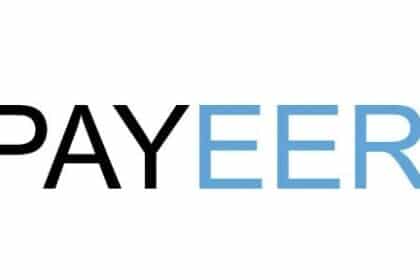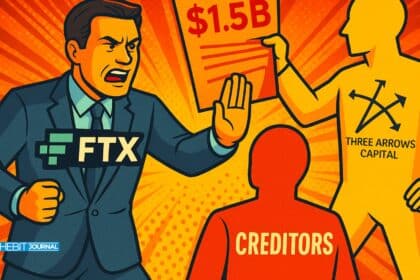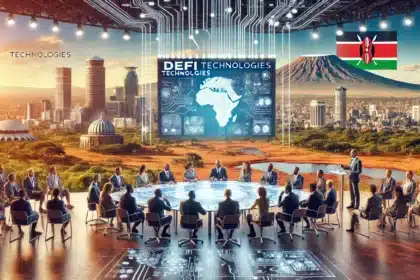According to the IMF’s March 2025 update, the new IMF crypto rules officially include Bitcoin and other digital assets in global economic reporting. These changes are part of the IMF’s seventh edition of the Balance of Payments Manual (BPM7). Countries now need to report crypto holdings, transactions, mining, and staking as part of their financial data.
How the IMF Classifies Crypto
Bitcoin and Similar Tokens
The IMF classifies tokens like Bitcoin as non-produced, non-financial assets. These assets have no backing or liability. Countries must now include them in the capital account section of their national reports. This section usually includes things like land, art, or patents.
Stablecoins and Backed Tokens
The IMF treats stablecoins, such as USDT and USDC, as financial instruments. These tokens have backing assets. Countries must record them under the financial account.
Staking and Mining Rewards
Crypto rewards from mining or staking now count as economic services. Countries must report them in the current account as part of service exports or investment income.
“Crypto assets without a counterpart liability designed to act as a medium of exchange (e.g., Bitcoin) are treated as non-produced non-financial assets… recorded in the capital account.”

What Makes the IMF Crypto Rules Important
1. They Recognize Crypto in National Wealth
Before this update, most governments did not count crypto in official reports. Now, they must treat crypto like bonds or gold.
As the IMF explains in its official release, “This new edition provides updated global standards… highlighting key changes in the global economy, such as the digitalization of financial assets.”
2. They Improve Global Data Quality
These rules help countries track crypto use and cross-border activity. They reduce gaps in data between countries and help central banks see the movement of digital assets.
3. They Help Spot Economic Risks
With better data, governments can monitor crypto trends. They can see when large crypto trades happen and where risks may grow.
4. They Do Not Make Crypto Legal Tender
These rules do not turn crypto into official currency. The IMF still warns about crypto risks, especially in countries without strong regulations.

Global Reactions to IMF Crypto Rules
Many countries now plan to follow the new rules. The U.S., Germany, Nigeria, and South Korea will likely include crypto in their future reports. El Salvador, which uses Bitcoin as legal tender, must now show how Bitcoin affects its financial position.
Table: How Crypto Assets Are Now Tracked
| Asset Type | IMF Classification | Account in Data |
|---|---|---|
| Bitcoin | Non-produced, non-financial | Capital account |
| USDT/USDC (Stablecoins) | Financial instrument | Financial account |
| Staking/Mining Income | Digital service or dividend | Current account |
Conclusion
Based on the latest research, the IMF crypto rules now give Bitcoin and other digital assets a clear place in global financial reporting. This shift helps countries record crypto flows more accurately, supports better economic planning, and brings consistency to data collection worldwide.
While these rules don’t change the legal status of crypto, they confirm its role in the modern economy and mark a significant step toward broader institutional recognition.
For more expert reviews and crypto insights, visit our dedicated platform for the latest news and predictions.
Summary
The IMF crypto rules now include Bitcoin and other digital assets in official global economic data. Countries must report crypto holdings, cross-border transfers, and income from staking or mining under clear classifications. These updates help improve data accuracy, support global consistency, and enhance financial risk tracking. While the rules don’t make crypto legal tender, they confirm its growing role in the economy and guide future reporting standards.
FAQs
Q: Do the IMF crypto rules make Bitcoin legal tender?
No. These rules only change how countries report crypto, not how they use it for payments.
Q: Which crypto assets are covered?
Bitcoin, Ethereum, stablecoins, and tokens are used for cross-border payments or earning rewards.
Q: When must countries follow these rules?
Countries will adopt them over time, with full use expected by 2030.
Q: Who created the new IMF crypto rules?
Over 160 countries and financial experts helped the IMF update the BPM7 guidelines.
Glossary
BPM7: The IMF’s Balance of Payments Manual, version 7.
Capital Account: Tracks assets like land or crypto that don’t have liabilities.
Financial Account: Tracks investments like bonds, stocks, and stablecoins.
Current Account: Shows trade, income from staking or mining, and services.
Financial Instrument: An asset with a backing or liability.
Non-Produced Asset: An asset not made through regular business, like Bitcoin.




























